A coral reef is a critical underwater ecosystem made up of the hard skeletons of an invertebrate called coral. Though they support approximately 25% of ocean species, they account for less than 1% of the ocean’s area. In addition to being breathtakingly beautiful, coral reef ecosystems are critical to the survival of fish and other animals, including humans.
- Coral reef ecosystems account for 0.1% of the ocean’s area.
- Why are coral reefs important? They sustain 25% of ocean life.
- They are hundreds of species that make up these unique ecosystems, including hard and soft coral.
- The largest reefs, including the Great Barrier Reef, are found in tropical and subtropical waters, especially in the Caribbean and Australia.
- How old are they? Today’s reefs have been around for between 6,000 and 8,000 years, according to the Reef and Rainforest Research Center (CRC).
- There are four types: atolls, patch, barrier, and fringing, which take different shapes.
The Best Coral Reef Locations For Diving
There is nothing like scuba diving through one of the world’s most beautiful landscapes. No matter where you go, it’s critical to be a licensed diver and follow local instructions to preserve marine life. Here are the world’s most amazing diving locations.
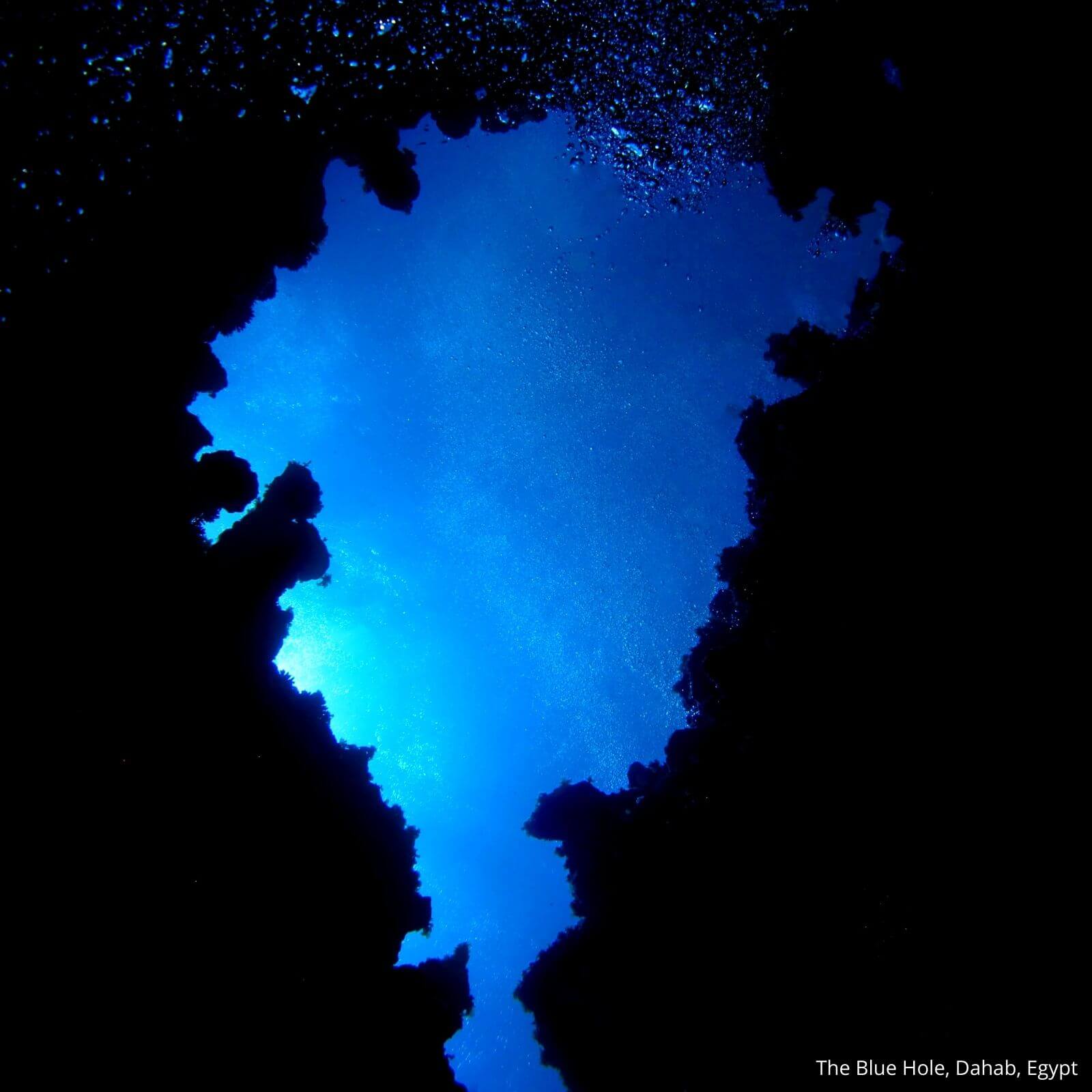
Pictured: Egypt's famous Blue Hole, located in Dahab.
Pro Tip: An octo strap is a must have dive accessory.
Red Sea Coral Reefs
There is an incredible array of underwater life in the Red Sea, which is typically divided into the North Red Sea and the South Red Sea. Here are a few notable diving locations if you’re looking to explore a coral reef ecosystem, though there are great wrecks in the Red Sea, too:
- Ras Mohammed National Park, Egypt
- Sha’b Abu Nuhas Reef off Shadwan Island, Egypt
- The Blue Hole in Dahab, Egypt
Ras Mohammed National Park Coral Reef
Located at the far south of the Sinai Peninsula, this park contains fringing coral reef examples and over 220 coral species. Yolanda Reef and Shark Reef are known as good locations for divers to view the park’s renowned soft coral reef species. The Ras Mohammed National Park is also known for the SS Thistlegorm wreck, which sunk in 1941.
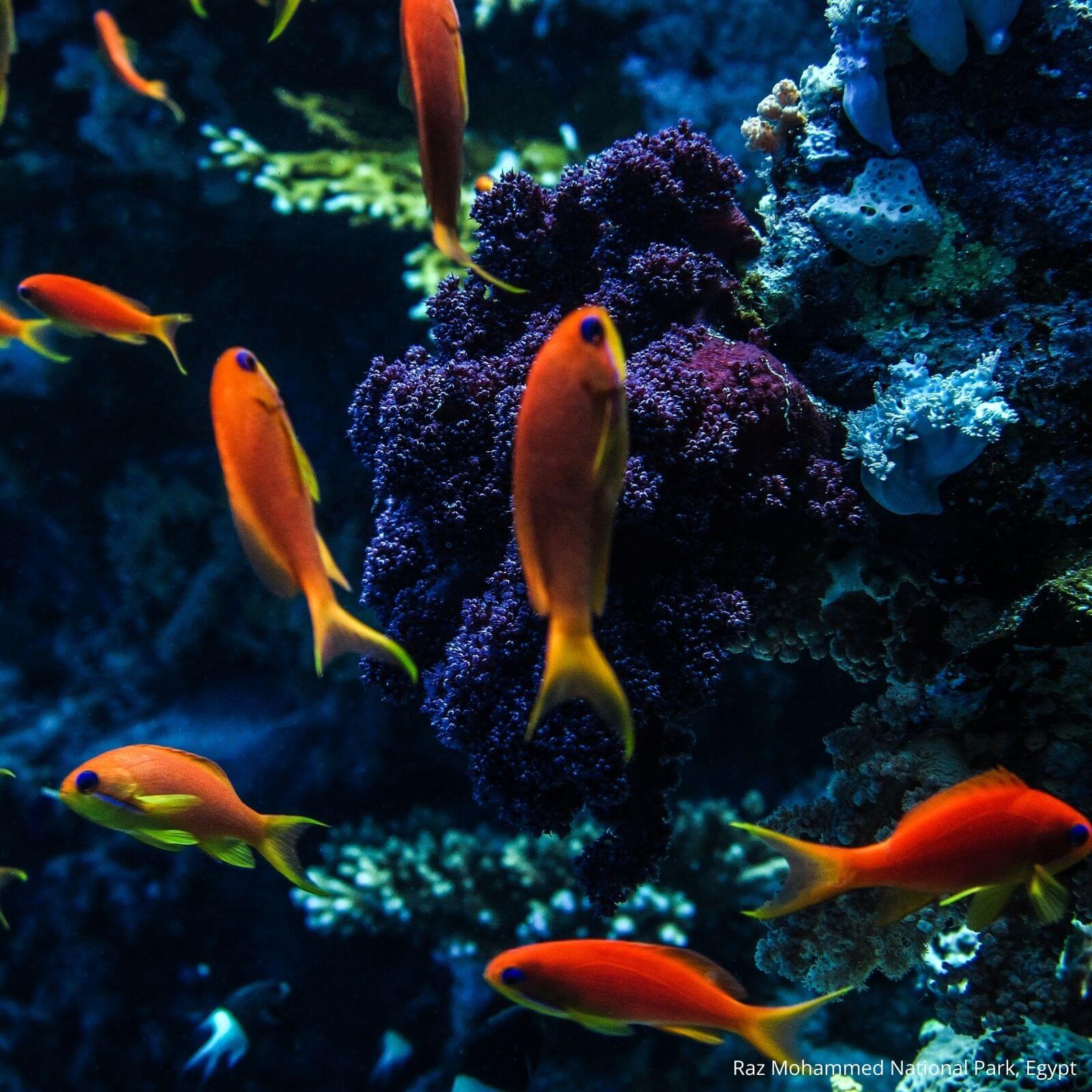
Pictured: Raz Mohammed National Park, Egypt
Sha’b Abu Nuhas Reef off Shadwan Island, Egypt
Located in the North Red Sea off Shadwan Island, the Sh’ab Abu Nuhas coral reef is best known for creating a dangerous shipping channel. This has led to a multitude of shipwrecks, making it a popular spot for divers.
The Blue Hole in Dahab, Egypt
Egypt’s most famous diving spot, the Blue Hole is a sinkhole with a depth of over 328 feet. Popular among technical divers and free divers, the Blue Hole is infamous for being the world’s most dangerous dive site, perhaps due to how challenging it can be to dive there.
6 Coral Triangle Diving Locations
Encompassing the Solomon Islands, Malaysia, Indonesia, Papa New Guinea, and Timor-Leste, the Coral Triangle is famous for its biodiversity. It contains 76% of the world’s coral species and sustains the lives of 120 million people in the surrounding nations. There are many amazing diving locations in this region; some notable ones include:
- Raja Ampat, Indonesia
- Kimbe Bay, Papa New Guinea
- The Solomon Islands
- Tubbataha Reef National Marine Park, Philippines
- Komodo National Park
- Pulau Sipadan, Malaysia
Raja Ampat Island Coral Reef
This famous archipelago contains five main islands and may have the most marine diversity of any place in the world. This is due to Raja Ampat’s location between the Pacific and Indian oceans. It has survived due in part to its remote location and inaccessibility to tourists.
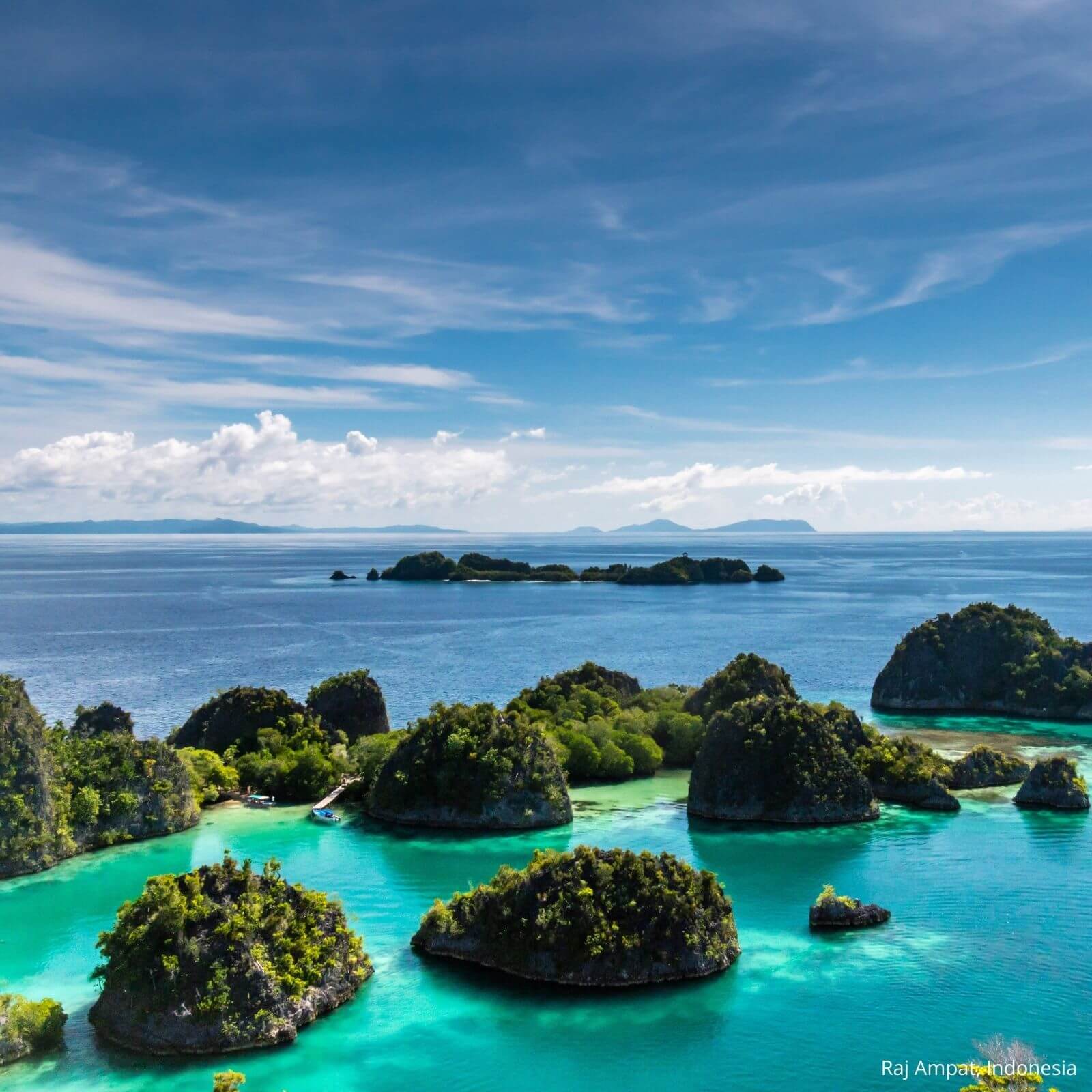
Pictured: Raz Ampat, Indonesia
Coral Reefs in Kimbe Bay, Papa New Guinea
Sitting between two tectonic plates, the Kimbe Bay regio is home to a variety of volcanoes as well as underwater mountains covered in coral reefs. It is known for being relatively untouched because it is so remote, though scientist worry about the effects of coral bleaching on all reefs, including this one.
The Solomon Islands
The Solomon Islands, located in the aptly-named Coral Triangle, is another amazing example of marine biodiversity. Diving includes wide-angle coral reefs, and soft and hard coral alike. Popular diving locations include the Devils’ Highway, Florida Islands, Munda, and Barracuda Point.
Tubbataha Reef National Marine Park, Philippines
A UNESCO World Heritage Site, the Tubbataha Reef National Marine Park contains three atoll reefs that serve as a unique habitat for marine and birdlife. Its reefs are over 100 meters in depth and are relatively undisturbed. This make them a great home for barracuda, tiger sharks, and 374 species of coral.
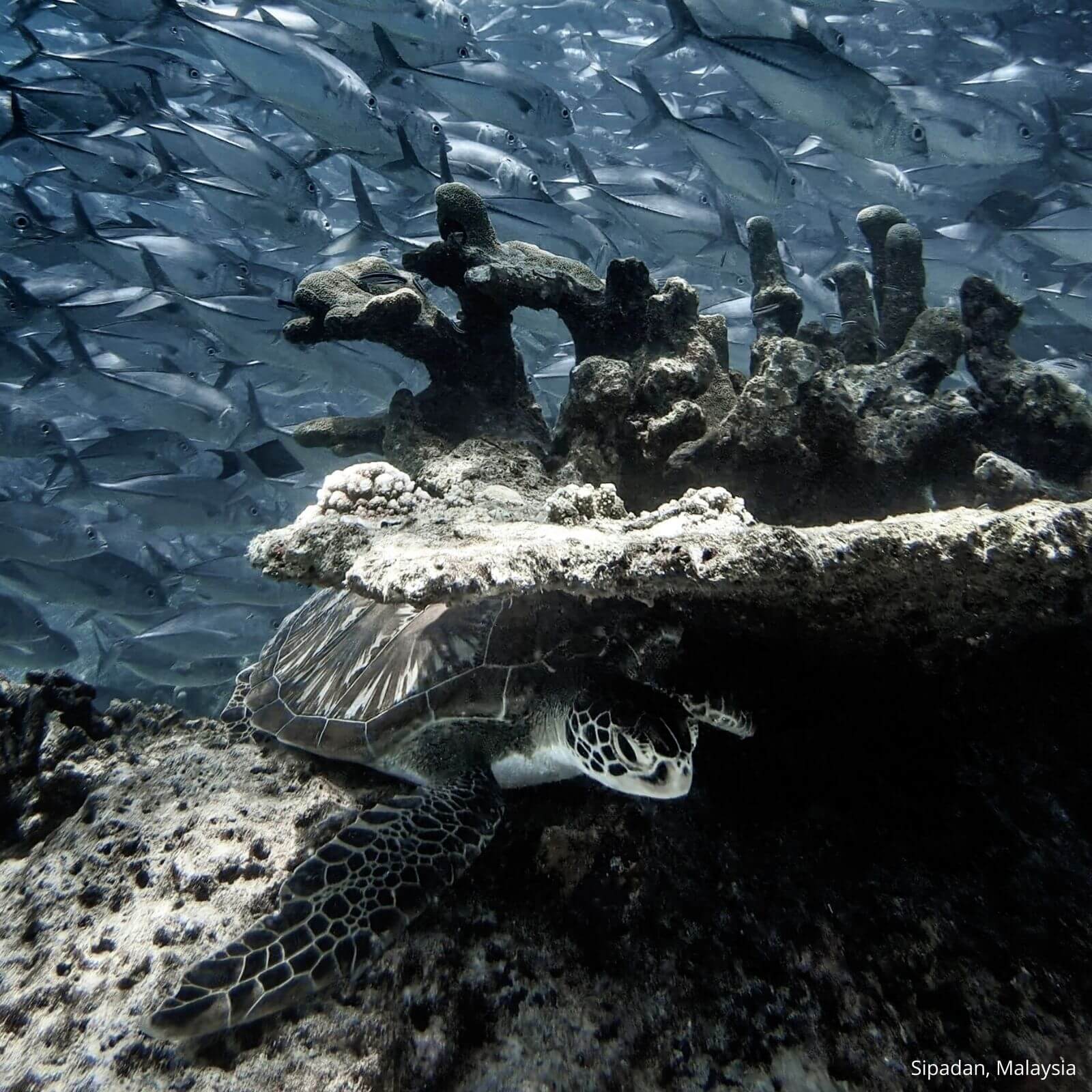
Pictured: Sipadan, Malaysia
Komodo National Park, Indonesia
Better-known for being home to the Komodo dragon, the largest lizard in the world, the Komodo National Park is also a UNESCO World Heritage Site with breathtaking diving. There are three main coral reef locations within the Komodo National Park: North, South, and Central. North and Central locations are better known for their coral walls.
Sipadan Island, Malaysia
Also known as Pulau Sipadan in Malay, this island is located off the coast of Malaysia. It is made up of corals resting on an extinct volcano, making it a diverse marine habitat. Sipadan Island is known for barracuda and hawksbill and green turtles sightings, as well as various sharks and rays.
This coral reef island is also infamous for being home to Turtle Tomb, an underwater chamber in which many turtles have become disoriented and died.
Coral Reef Swimming in Fiji
Dubbed “The Soft Coral Capital of the World,” Fiji has many dive options to choose from, including barrier reefs, shark dives, and lagoons. Where are coral reefs found in Fiji? Some great locations include:
- The Great Astrolabe Reef
- Mamanuca Islands
- Beqa Lagoon
- Coral Coast
The Great Astrolabe Coral Reef
One of the largest barrier reefs in the world, The Great Astrolabe Coral Reef surrounds Kadavu Island. It is home to tuna, sharks, mahi-mahi, and many other animals, especially large fish.
Mamanuca Islands
This volcanic archipelago is more popular among visitors to Fiji. It is home to beaches as well as coral reefs, making it a great location for swimming, snorkeling, and diving. Fun fact: several seasons of Survivor have been filmed on these islands.
Beqa Lagoon
Beqa Lagoon is famous for being home to eight shark species, including bull sharks, tiger sharks, and silvertip sharks. It is also home to a variety of coral reef ecosystems and shipwrecks. Beqa Lagoon is considered best for advanced divers and only those supervised by local shark wranglers.
Coral Coast
A popular tourist destination, Coral Coast is located between Suva — Fiji’s largest city — and Sigatoka — a smaller town. This stretch of beach is breathtaking and easily accessible from main transport hubs.
Caribbean Coral Reefs
Though closer diving locations for Americans than some on this list, Caribbean coral reefs are increasingly threatened by human development, including pollution, overfishing, and construction. Bear in mind the costs of improper management to these ecosystems wherever you dive. Here are a few of the region’s most famous coral reef diving spots.
- Tortugas Reef, Mexico
- Gardens of the Queen, Cuba
- Klein Bonaire Reef, Bonaire, a special municipality of the Netherlands
- Belize Barrier Reef, Belize
Tortugas Reef, Mexico
Known for its sea turtles, Tortugas is home to sponges, king crabs, sharks and a variety of other breathtaking wildlife. Located off Playa Del Carmen, Tortugas Reef is home ot dive tours ranging from 54 to 69 ft in depth.
Garden of the Queen Coral Reef, Cuba
Also a great snorkeling location, the Garden of the Queen is one of the region’s best-preserved ecosystems. Thanks to protective measures, shark and fish populations have increased since the late ’90s. The park is home to mangroves, groupers, parrotfish, sea turtles, and more.
Klein Bonaire Coral Reef, Bonaire
This uninhabited island off Bonaire, which is managed by the Netherlands, is famous for its coral reef ecosystem. Diving locations are close to the beach, making it ideal for snorkelers, too. The Klein Bonaire Reef is located within the Bonaire National Marine Park, the world’s oldest marine reserve. The Bonaire National Marine Park contains 2,600 hectares of vegetation, including coral reef, mangrove, and seagrass.
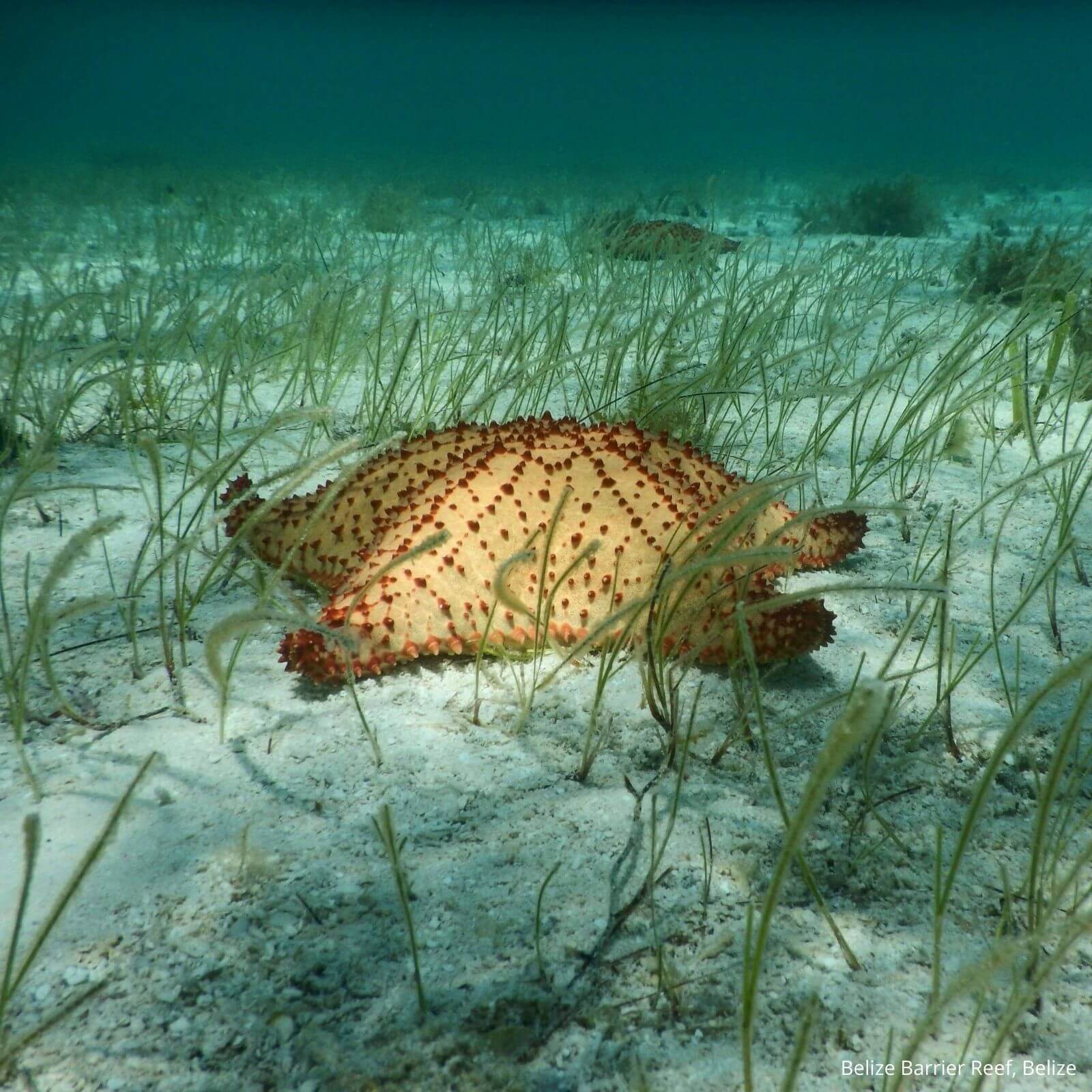
Pictured: Belize Barrier Reef, Belize
Belize Barrier Reef, Belize
Located off Belize, the Belize Barrier Reef is part of the Hol Chan Marine Reserve. It is a UNESCO World Heritage Site containing coral reef systems, seagrass, and mangroves.
Diving is permitted around the Belize Barrier Reef, which is part of the larger Meso-American Barrier Reef System, a massive reach stretching from Honduras to Cancun — the largest reef in the world after the Great Barrier Reef.
The Belize Barrier Reef Reserve System is a protected part of the reef, including a variety of atolls, cays, and reserves. Coral bleaching remains a problem in a variety for these locations, though the reasons for it are poorly understood.
Australian Coral Reefs
Australia is home to a variety of underwater ecosystems — not just the Great Barrier Reef.
- Great Barrier Reef
- The Great Southern Reef
- Ningaloo Reef
- Gulf of Carpentaria
- Shark Bay
The Great Barrier Reef
The world’s most famous marine ecosystem, the Great Barrier is the largest coral reef in the world. It is over 1,400 miles long and 133,000 square smiles. Located off Queensland, Australia, the Great Barrier Reef is so large that you can see it from outer space.
Two-thirds of the Great Barrier Reef have suffered bleaching, according to scientists. This is the result of warmer water and changes in light and nutrients.
Two million people visit the Great Barrier Reef every year. The most popular diving locations along the Great Barrier include The Whitsundays and Cairns, though there are a variety of boating tours available. Osprey Reef is another great diving location in the area.

Pictured: Great Barrier Reef, Australia
The Great Southern Reef
Though less famous than the Gear Barrier, the Great Southern Reef is a massive, covering over 71,000 square kilometers. It hugs the coastline from Western Australia to New South Wales and Tasmania. The Great Southern Reef’s main feature is its kelp forests, made up of seaweed that is both an important food source and critical habitat for sponges, crustaceans, and other species unique to the region.
Ningaloo Coral Reef
Off the coast of Western Australia, this unique environment is famous for being home to whale sharks, the largest fish in the world, humpback whales, and manta rays. Situated very close to land, the Ningaloo Reef is 160 miles long, and Australia’s largest fringing coral reef.
Gulf of Carpentaria
The Gulf of Carpentaria is known for its fringing and patch reefs, which are not located near the surface. The Gulf of Carpentaria Marine Park is located off Queensland. It is an important conservation zone for the green turtle and flatback turtle.
Shark Bay
In addition to being home to the whale shark during April and May full moons, Shark Bay is also home to loggerhead sea turtles, dugongs, otherwise known as sea cows, and hundreds of threatened birds, reptiles, and mammals. Its most distinctive feature is its Stromatolites: formations of microorganisms that glue rock particles together to create a sedimentary mound. Stromatolites are one of the oldest life forms on Earth.
Hawaii Coral Reefs
Hawaii is famed for its coral reef ecosystem diving opportunities. Whether you’re interested in cave diving, sharks, manta rays, turtles, or unique flora, this archipelago has it all.
Anini Beach
A great spot for diving (though only during the summer, as well as snorkeling, paddle boarding and more. From Anini Beach, you can see Hawaii’s largest fringing reef and well-preserved marine life.
Moloka’i Fringing Coral Reef
An incredible spot to see hammerhead sharks, Monk Seals, and unique coral including antler, cauliflower, and blue rice coral. This is thanks to the Moloka’i reef, a well-preserved fringing reef with close to 40 dive sites. Some of the most popular dives include:
- Deep Corner
- Fish Rain
- Fish Bowl
Lanai First and Second Cathedral Dives
The Lanai Cathedral is the name given to an underwater lava tube off of Maiu. It’s made up of small caves and a coral garden — and has a variety of awe-inspiring lava formations.
Molokini Wall
The Molokini Crater — it’s back is referred to as the Molokini Wall — is a jaw-dropping 200–300 ft crater. Due to its close proximity to the open ocean, the Molokini Crater is home to sharks, whales, and dolphins. It’s home to antler coral and surrounded by breathtakingly clear waters.
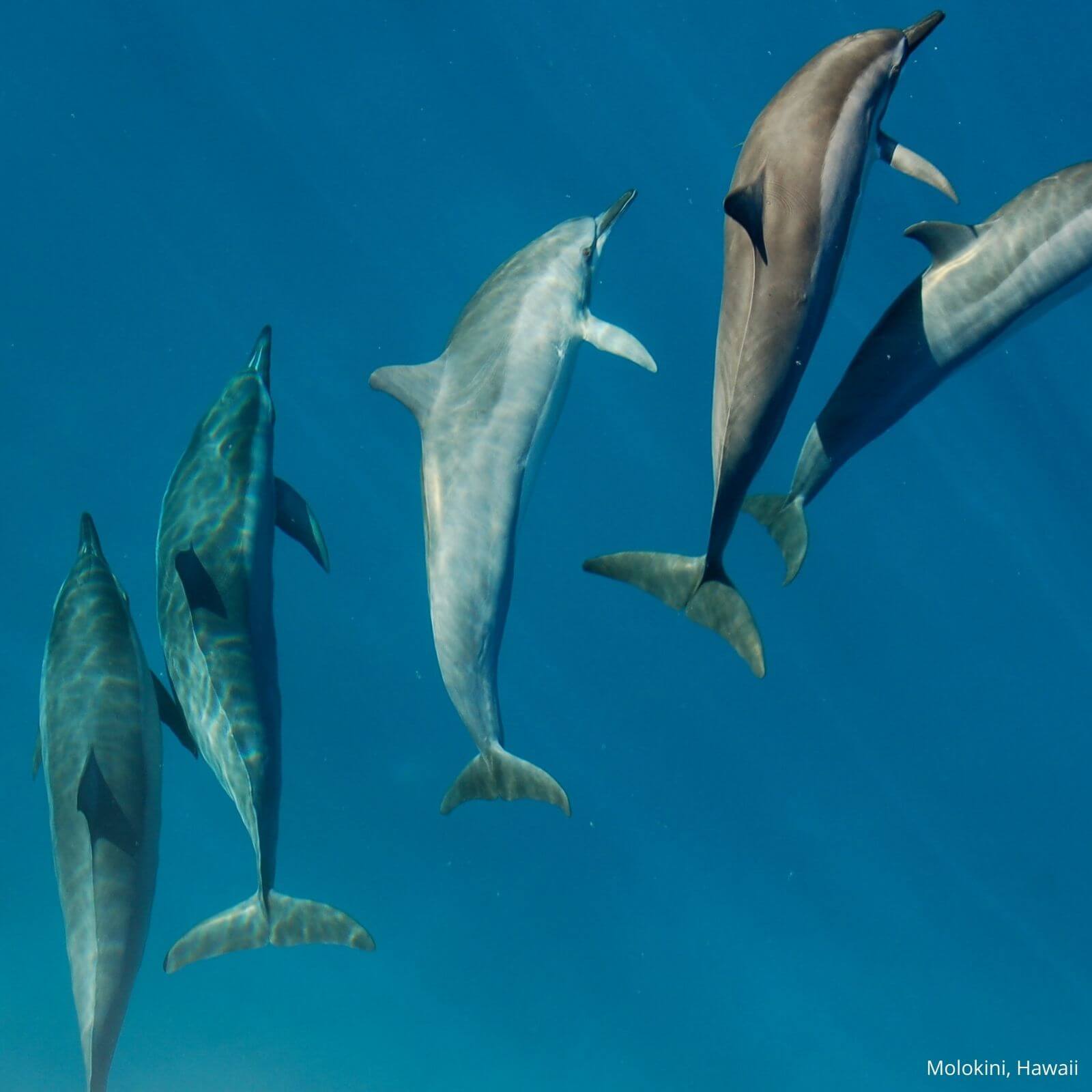
Pictured: Dolphins in Molokini, Hawaii
4 Types of Coral Reefs
Though each coral reef is unique in its biodiversity, there are structurally four main types:
- Barrier
- Platform
- Fringing
- Patch
- Atoll
Here’s how to distinguish between them out in the wild.
What Is a Barrier Reef?
A lagoon or channel separates a barrier reef from land. The main difference between barrier and fringing is that that the former is separated by deeper water and its outer edge abuts open water rather than shore.
Famous Examples
- Great Barrier Reef
- New Caledonian Barrier Reef
- Belize Barrier Reef
What Is a Fringing Reef?
Sometimes referred to as a shore reef, a fringing reef is in close proximity to the shoreline, either connected to it or separated by shallow water. Fringing reefs are very common and range widely in length, They typically exist just below the water, making them more accessible than other coral reef examples.
Fringing Reef Examples
- Ningaloo Reef
- Ras Mohammed National Park
- Moloka’i
- Weld Island
- Gulf of Carpentaria
What Is a Platform Reef?
Also known as a patch reef, a platform reef typically grows on a continental shelf. Those that grow on sandbanks are typically long, whereas some are horseshoe shaped due to asymmetric currents.
Platform Coral Reef Examples
- Torres Straight
- Low Islets, which are part of the Great Barrier Reef
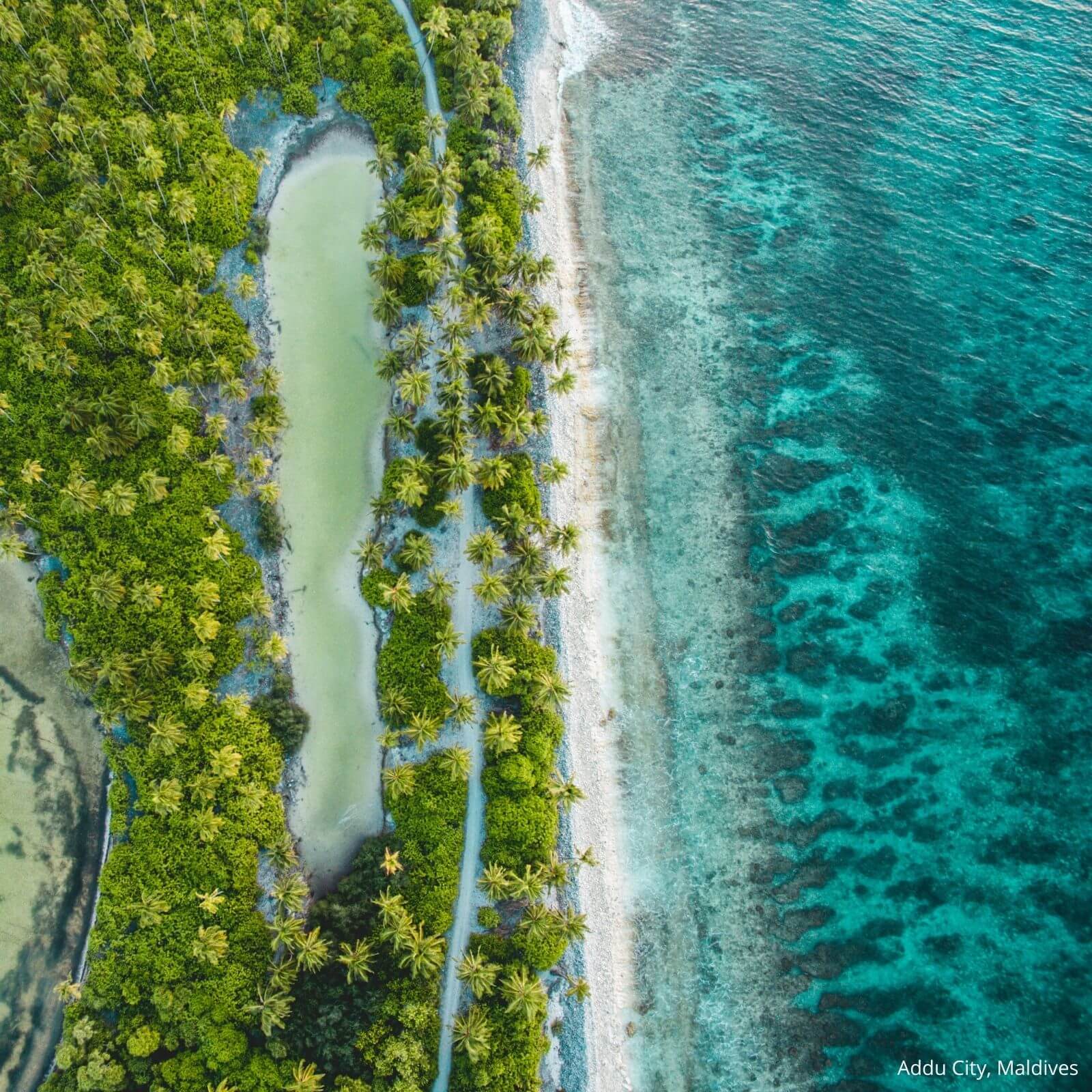
Pictured: Addu City, Maldives
What Is an Atoll Reef?
These ring-shaped coral reefs can also take the shape of an island or series of islands. There is a lagoon at the center of an atoll reef. Sometimes they form around an extinct volcano. An atoll reef sits just below sea level.
7 Atoll Coral Reefs
Most examples of these reefs are located in the Pacific Ocean.
- The Atolls of the Maldives
- Kure Atoll
- Elizabeth Reef
- Creat Chagos Bank
- Rosalimd Bank
- Truk Lagoon
- Lihou Reef